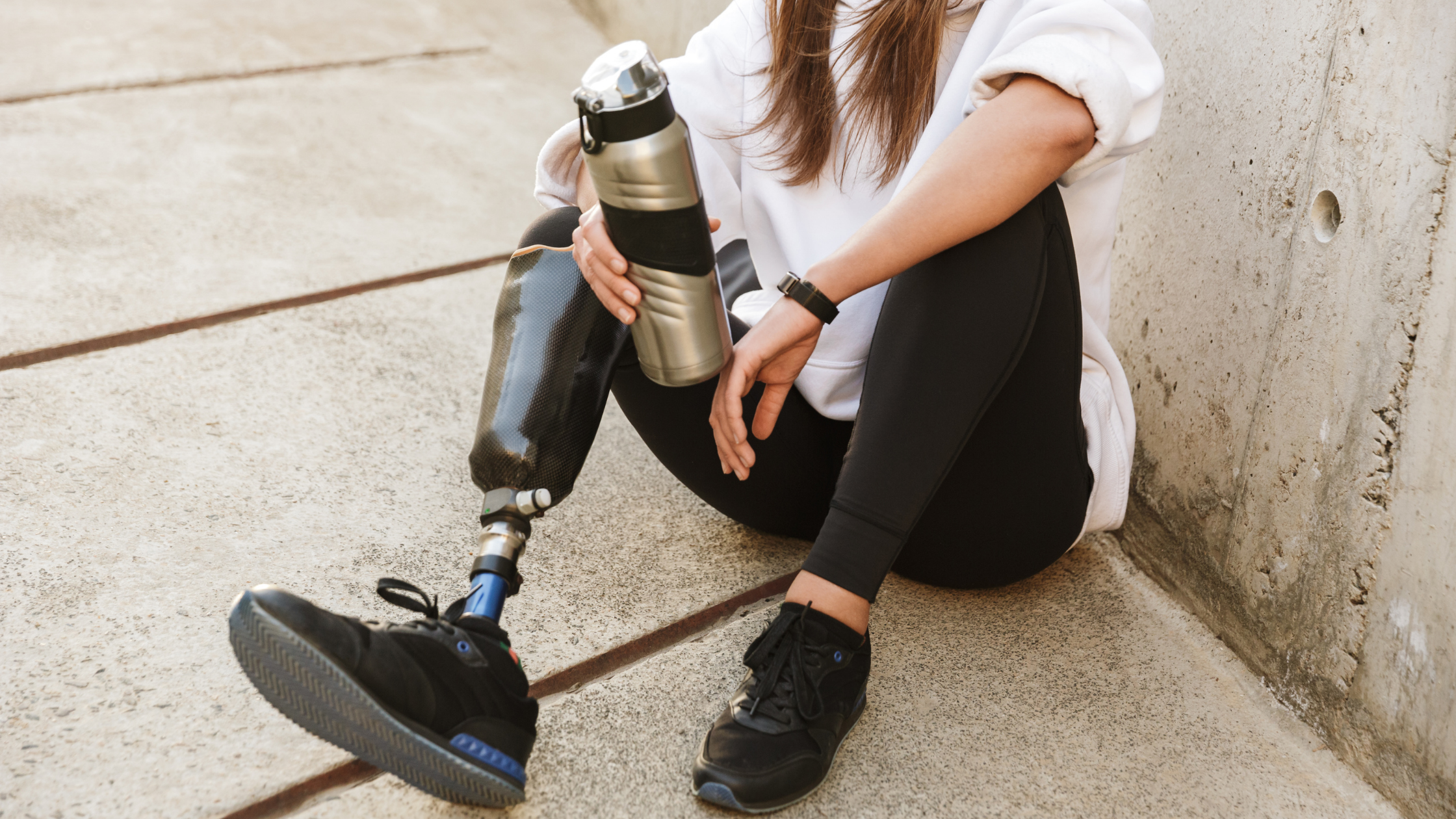When you hear the words bionic technology, you might think of brain implants and robotic arms from 1970s science fiction (yeah ‘Bionic Woman’ fans!). But this is where science has caught up with fiction and surpassed it in many ways.
Today’s developments are driven by the same idea behind the show: restoring someone with disabling injuries using technology. You have probably seen prosthetic arms and legs that are pretty basic. Even the ones with fun patterns printed on them do not do much to replace what an arm and leg can do.
However, advances in robotics, artificial intelligence, and neuroscience are changing what it means to have a disability. Now there are bionic eyes restoring sight and prosthetic limbs a person can move with their thoughts. There are even exoskeletons that help people with spinal cord injuries walk.
This technology is completely transforming the way we think of disability.

What is ‘bionic technology’ exactly?
There are fancy definitions out there, but easiest way to think of bionic technology is as technology that tries to replace lost human function. That lost function could be a missing limb, damaged nerves, or loss of senses. To be most effective, this technology has to communicate with the human body.
Bionic devices have to take information in, such as which direction a person wants to move their foot. They also have to send information back, such as the ground is rocky. This is being done by devices that can detect electrical signals in a person’s brain and nerves, and send signals back. This two-way communication helps the wearer feel like the device is truly part of them.
Unlike old prosthetic devices, newer bionics use robotics to move more like natural limbs. This can allow people wearing them to do things like walk with a normal gait and even dance.
There are many different types of technologies that fall under the ‘bionic’ category. One way to group them is by the human function they support.

Supporting Sight
A few years ago the creation of a bionic eye made news around the world.
This bionic eye used a sensor implanted in the retina – an area at the back of the eye that has all of the nerve cells that allow you to see. The implant was connected to a camera that sits on a pair of glasses.
When the user looks at things, the camera sends signals to the sensor, which tells the brain what they are seeing. The picture was mostly black and white and a bit fuzzy. However it has allowed people to see shapes and outlines, recognize family members, and walk around their surroundings.
One limitation was it only works for people who are blind because of issues with their retina. There are other causes of blindness, and this system would not help in those cases. The company that created it, Second Sight, has moved on to a new bionic eye system. The new one works by implanting electrodes in the brain instead of the retina.
This offers hope for restoring sight to a wider group of people.

Sensing Movement
For a bionic arm or leg to feel like it is part of your body, it needs to understand how you want to move and send information back to you letting you know where it is. This two-way communication is a big area of study in the world of bionics.
MIT’s Center for Extreme Bionics says its goal is to eliminate disability. They are taking the world of bionics to another level. The center is studying the connection between nerves, muscles, and the brain. They want to keep the signals your brain sends to your limbs in place after amputation.
One way to do this is by linking muscles together during amputation surgery. This lets the muscles continue to communicate with each other. This muscle communication is how we can tell where our limbs are, how fast they are moving, and in what direction, even with our eyes closed. By keeping that communication in place during amputation, electrodes can be put on the muscles so they can communicate with a bionic limb.

The MIT researchers hope to make the device feel like part of the person by thinking about how the surgery is done at the same time the bionic device is designed.

Standing, Walking, and Even Biking
If you want to see what is possibly the coolest competition on the planet, check out the Cybathlon.
This is a championship where people with physical disabilities from around the world compete using bionic technology to assist them. Think of it as the Paralympics meets the Avengers.
Competitions include things like:
Functional Electrical Stimulation Bike Race: This race uses electrodes to send currents to paralyzed muscles, which makes them move again. Competitors with paraplegia – paralysis from the waist down – compete on recumbent bicycles where their muscles are stimulated with electrical currents.
Powered Exoskeleton Race: This race involves using a powered exoskeleton – a wearable machine that helps limbs move. This race aims to see where exoskeletons can go in the future as an alternative to wheelchairs. Participants must have complete paralysis of the legs from spinal cord injuries. Tasks include things like getting up from a sofa, navigating around furniture, and going up stairs.
One gold medal winning team was Team Cleveland, which includes Dr. Ronald Triolo of Case Western Reserve and the Cleveland VA Medical Center. Dr. Triolo and team are looking at how to address needs of disabled veterans using bionic technology. Their technologies restore function caused by disability and compensate for limb loss.
Among their projects are advanced exoskeletons that use hydraulic joints to work with a person’s muscles. These exoskeletons help a person walk independently, stand upright, and climb stairs.
Similar to the team at MIT, this group is also looking out how to have technology communicate with a person’s nervous system. They are taking the approach of stimulating the nerves on the remaining part of the limb to recreate the natural feedback loop that a person would get when they touch something or use their limb.

Replacing a damaged nervous system
The nervous system controls seeing, hearing, feeling, moving, and more. You could see any of these technologies as replacing part of a damaged nervous system. But technologies implanted in the brain take this a step further.

A neural implant is a device that communicates with the nerve cells in your body. Neural implants to address disabling conditions like Parkinson’s have been around for a few years. Neuralink – one of Elon Musk’s companies – is working on neural implants that will let you control a computer or mobile device from your brain.
It is not difficult to imagine the next step for neural implants is to allow people with spinal cord injury or amputations to control bionic limbs with their minds.

Key Takeaways:
Bionic technology is meant to replace lost human function, which could be because of eye disease, amputation, or spinal cord injury.
One way to group these technologies is by what human function they support:
- Restoring sight – Although the bionic eye is not a complete replacement for lost vision, we will likely see advancements in the future that get much closer.
- Sensing movement – Devices have gotten advanced enough that they can understand intended motion and give the wearer a sense of touch when handling objects.
- Standing, walking, and even biking – Technology like advanced exoskeletons have the potential to replace wheelchairs at some point in the future.
- Replacing a damaged nervous system – items like neural implants may provide the workaround to nerve damage that allows a person to think about moving and be able to move.
We are moving closer to these devices being part of the wearer, and not just a clunky replacement. In our lifetimes, technology will challenge us to think of disability very differently than we do now.






This is a great article! thanks!
I read a book in 7th grade called The Running Dream by Wendelin Van Draanen about a girl who lost a leg in an accident and pushed through hardships and got back to running. Reading this article, I learned much more about bionic technology. It can help people see by attaching to the retina or the brain, depending on how the person lost their sight. The bionic body part needs to understand what the user needs it for, and send the body where it is. Lastly, I was fascinated by the Olympics they have because of how different they are.
As I read through the article it really gave me a better understanding on the use Bionic technology. Having a family member who uses bionic technology for her arm for reasoning of damaged, lost nerves. I never asked her how it works and how it feels, I usually kept that myself since I did not want to feel bad, annoyed asking her. Reading your article really gave me a better understanding on how it is to feel and corporate with higher technology, I did not know that they had competition called Cybathlon. Having them compete is very interesting, knowing for them to learn a whole new addition to their body and being able to compete to perfection with the new technology with themselves. The future is here, and I am glad we can bring damages parts of your body back to life.
Thank you for commenting, Neal! I am glad this article helped you better understand what your family member is experiencing. The Cybathlon is one of the most interesting events I have ever seen – it is truly a competition of mind and body.